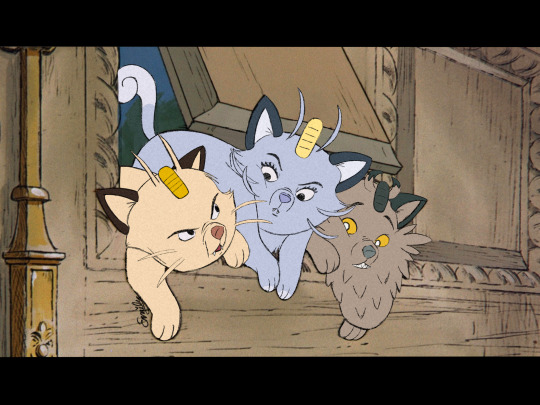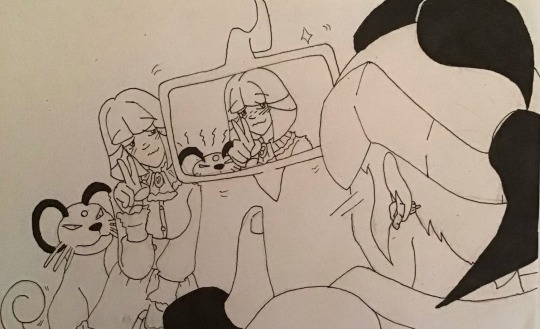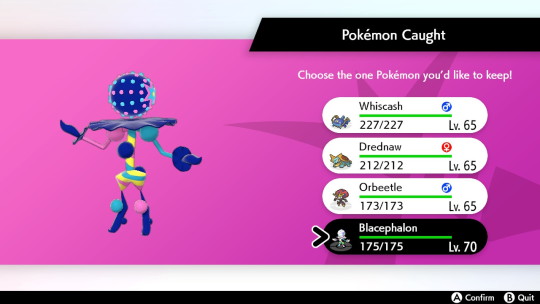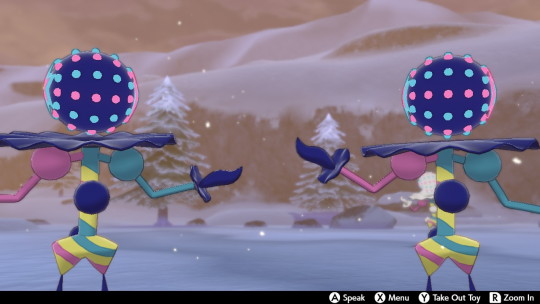#Persian shield
Text


Persian shield 💜🌿
#Persian shield#plant lover#garden plants#my plants#plants#plant aesthetic#plant photography#plant photos#purple#plant pics#plant love#plant lady#plant life#purple plants#garden photography#garden photos#gardening#garden#my photography#my photos
705 notes
·
View notes
Text

My houseplant spotlight this week is the first of the three houseplants I bought for my birthday: a Persian shield.
There's kind of a serendipitous story behind this-- we went to the Fancy Plant nursery, but I didn't want to overspend, and I told myself that I could only get stuff that was on my wishlist and wasn't too expensive. I had already picked out two plants that met that criteria, and we were walking through the outdoor plant section to look at some pots, when I spotted these.
During my arduous quest to find a cast-iron plant, I spent a lot of time on Etsy, looking at mail-order plants, and I had seen (and coveted) the Persian shield before, but ultimately decided I didn't want to mail-order plants unless I couldn't find them locally, and I kinda forgot about this one. The important thing was that when I saw it and recognized the name, I remembered that it could be easily grown indoors as a houseplant.
And my gosh, look at it! It's gorgeous! The color is almost iridescent, like dragon scales!

It's also huge-- that's an 8" pot. They like low light and lots of humidity. I read that they lose their bright color after a year or two, but you can easily propagate them from cuttings. Also it was five dollars and fifty cents. It's so big and beautiful and I love it so much. Happy Birthday to me.
22 notes
·
View notes
Text

Out on deck, Day lilies and Persian Shield

#out on deck#deck garden#day lilies#Persian Shield#photozoi#7-2023#original photos#amateur photographer#nature
14 notes
·
View notes
Text

A Persian Shield leaf.
#Persian Shield#purple foliage#purple foliage plant#gothic gardening#gothic gardener#gothic garden#goth garden#plant goth#photographers of tumblr#photographers on tumblr#Australian photographer#australian photography
13 notes
·
View notes
Photo

Strobilanthes, also known as Persian Shield.
3 notes
·
View notes
Text

Once the idea to draw the different regional Meowths as the kittens in the Aristocats came into my head it wouldn’t leave until I did this lol. I’m actually so happy with how it turned out, and it was so much fun to do!
#the kitties!#largely I wanted to do this bc of the alolan meowth (now Persian) who I’m using in my soul link rn#she’s fantastic and bites everything#if I ever get to play sword and shield I’m totally using Galarian meowth#Pokémon#meowth#alolan meowth#galarian meowth#the aristocats#alolan pokemon#galarian pokemon#regional variant#pokémon art#Kanto meowth
4K notes
·
View notes
Text


I thought of a fun strategy for perrzerker that is not competitively viable, but still very fun to use.
Hear me out.
Iron head does 80 base damage.
STAB is ×1.5 = 120
Steely spirit is ×1.5 =180
Letting it hold metal coat is ×1.2 =216
And from there, if you Tera type it as steel, it gets another ×2 STAB = 432
DROP IT IN A TRICK ROOM AND WATCH IT LITERALLY CRATER OPPONENTS IT'S BEAUTIFUL
Mine has curse, rest, taunt and Iron head. It's real fun to give my viking boi some use.
also, just look at this cute boi. Who wouldn't want one on their team???
#digital art#fanart#nintendo#pokemon#gamefreak#digital#digital artist#digitalart#pokemon fanart#meowth#persian#pokemon violet#pokemon scarlet#pokemon sword#pokemon shield#pokemon home#pokemon go#steel type#cat#viking#cats#vikings#nintendo switch#digital artwork#perrzerker#perrserker
9 notes
·
View notes
Text

Another friend/ship I’d like to see in Pokemon one day :)
#kat draws art#traditional art#pokemon#pokemon sword and shield#pokemon x and y#Pokemon x#Pokemon y#Pokemon sword#Pokemon shield#evelyn#battle chatelaine evelyn#Raihan#gym leader raihan#Persian#pokemon persian#another in the pic series of let evelyn have fun friends#ie let the double battle specialists meet#Persian doesn’t look too happy#I like making up random outfits for Evelyn#who’d be the more boisterous friend for Evelyn?#Emmet or Raihan?
20 notes
·
View notes
Text


the voices did not stop so i hunted a second clown to be friends with my almost 6 yo son
#ultra beast#pokemon#blacephalon#ultra babies#ub burst#ika rambles#pokemon sword and shield#dynamax adventures#i never count these but can't be more than 20 adventures#i got a persian in the second one that's the only phase
3 notes
·
View notes
Text
His paws aaah (His name is Claud)

#persian pokemon#shiny persian#persian#screenshot#pokemon camping#pokemon sword and shield#pokemon shield#pokemon swsh#swsh
29 notes
·
View notes
Text


Persian shield💜
#Persian shield#plant photos#plant photography#plant life#plant#plant leaves#plant love#plant lover#leaves#purple#plant aesthetic#my plant's#my photography#my photos
335 notes
·
View notes
Text
I thought about that “proplifting” post today at the plant nursery while I pinched off a variegated spider plant baby and hid it in my other plants. :>
#aint no way I'm paying for a spider plant#even if it has stripes#adult plant was like $8 lol#I spent that $8 on a persian shield because mine died
28 notes
·
View notes
Text


spent too much money at the garden center yesterday but look at the annual pot I put together 😊🫶
#before and after planting/watering#did a couple others but this is my fav#really like the color blend between the persian shield and the marigolds#reallllly excited to see it grow in!!!
2 notes
·
View notes
Text
Despite Sparta’s reputation for superior fighting, Spartan armies were as likely to lose battles as to win them, especially against peer opponents such as other Greek city-states. Sparta defeated Athens in the Peloponnesian War—but only by accepting Persian money to do it, reopening the door to Persian influence in the Aegean, which Greek victories at Plataea and Salamis nearly a century early had closed. Famous Spartan victories at Plataea and Mantinea were matched by consequential defeats at Pylos, Arginusae, and ultimately Leuctra. That last defeat at Leuctra, delivered by Thebes a mere 33 years after Sparta’s triumph over Athens, broke the back of Spartan power permanently, reducing Sparta to the status of a second-class power from which it never recovered.
Sparta was one of the largest Greek city-states in the classical period, yet it struggled to achieve meaningful political objectives; the result of Spartan arms abroad was mostly failure. Sparta was particularly poor at logistics; while Athens could maintain armies across the Eastern Mediterranean, Sparta repeatedly struggled to keep an army in the field even within Greece. Indeed, Sparta spent the entirety of the initial phase of the Peloponnesian War, the Archidamian War (431-421 B.C.), failing to solve the basic logistical problem of operating long term in Attica, less than 150 miles overland from Sparta and just a few days on foot from the nearest friendly major port and market, Corinth.
The Spartans were at best tactically and strategically uncreative. Tactically, Sparta employed the phalanx, a close-order shield and spear formation. But while elements of the hoplite phalanx are often presented in popular culture as uniquely Spartan, the formation and its equipment were common among the Greeks from at least the early fifth century, if not earlier. And beyond the phalanx, the Spartans were not innovators, slow to experiment with new tactics, combined arms, and naval operations. Instead, Spartan leaders consistently tried to solve their military problems with pitched hoplite battles. Spartan efforts to compel friendship by hoplite battle were particularly unsuccessful, as with the failed Spartan efforts to compel Corinth to rejoin the Spartan-led Peloponnesian League by force during the Corinthian War.
Sparta’s military mediocrity seems inexplicable given the city-state’s popular reputation as a highly militarized society, but modern scholarship has shown that this, too, is mostly a mirage. The agoge, Sparta’s rearing system for citizen boys, frequently represented in popular culture as akin to an intense military bootcamp, in fact included no arms training or military drills and was primarily designed to instill obedience and conformity rather than skill at arms or tactics. In order to instill that obedience, the older boys were encouraged to police the younger boys with violence, with the result that even in adulthood Spartan citizens were liable to settle disputes with their fists, a tendency that predictably made them poor diplomats.
But while Sparta’s military performance was merely mediocre, no better or worse than its Greek neighbors, Spartan politics makes it an exceptionally bad example for citizens or soldiers in a modern free society. Modern scholars continue to debate the degree to which ancient Sparta exercised a unique tyranny of the state over the lives of individual Spartan citizens. However, the Spartan citizenry represented only a tiny minority of people in Sparta, likely never more than 15 percent, including women of citizen status (who could not vote or hold office). Instead, the vast majority of people in Sparta, between 65 and 85 percent, were enslaved helots. (The remainder of the population was confined to Sparta’s bewildering array of noncitizen underclasses.) The figure is staggering, far higher than any other ancient Mediterranean state or, for instance, the antebellum American South, rightly termed a slave society with a third of its people enslaved.
3K notes
·
View notes
Video
youtube
0 notes
Video
youtube
Watching this live was something.
0 notes